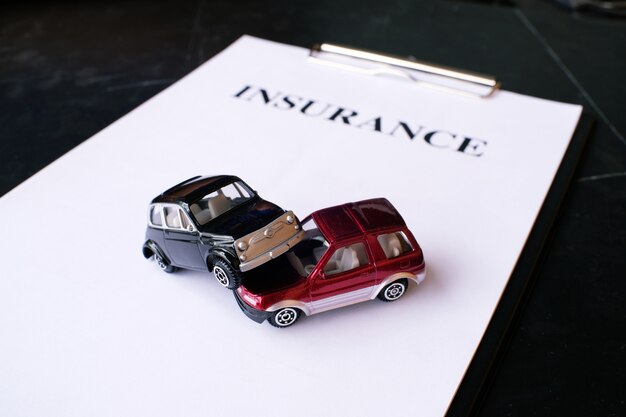Classic Car Insurance
Introduction
Classic cars are more than just vehicles; they are cherished pieces of automotive history, often representing significant financial and emotional investments. Whether it’s a vintage muscle car, an antique roadster, or a collectible sports car, owners of classic cars understand the importance of maintaining and protecting these unique vehicles. Classic car insurance provides tailored coverage designed to address the specific needs and risks associated with owning a classic car. This article explores the importance of classic car insurance, the types of coverage available, key considerations when selecting a policy, and tips for optimizing protection for your prized possession.
The Importance of Classic Car Insurance
Specialized Coverage for Unique Vehicles
Classic cars have unique characteristics, including their age, rarity, and condition, which differentiate them from standard vehicles. Standard auto insurance policies may not adequately cover the value and specific needs of classic cars. Classic car insurance offers specialized coverage that considers these factors, ensuring that your vehicle is protected.
Agreed Value Coverage
One of the most significant benefits of classic car insurance is agreed value coverage. Unlike standard auto insurance, which often pays out based on the actual cash value (depreciated value) of the vehicle, classic car insurance allows you to agree on the car’s value with the insurer. In the event of a total loss, you receive the full agreed-upon amount, ensuring that you are compensated fairly for your vehicle’s true worth.
Financial Protection Against Unique Risks
Classic cars face unique risks, including higher repair costs due to the need for specialized parts and labor, as well as increased theft risk due to their value and desirability. Classic car insurance provides coverage for these risks, offering financial protection that standard policies may not.
Types of Classic Car Insurance Coverage
Classic car insurance policies offer various types of coverage tailored to address the specific needs and risks of owning a classic car. Understanding these coverage options can help you choose the policy that best fits your needs.
Liability Coverage
Liability coverage is a fundamental component of any auto insurance policy. It protects you in the event that you are found legally responsible for bodily injury or property damage caused by your vehicle. Classic car insurance typically includes higher liability limits, reflecting the potentially higher financial risks associated with owning a valuable vehicle.
Agreed Value Coverage
As mentioned earlier, agreed value coverage ensures that you and the insurer agree on the value of your classic car. This agreed value is the amount you will receive in the event of a total loss, providing peace of mind and financial protection for your investment.
Collision Coverage
Collision coverage pays for damage to your classic car resulting from a collision with another vehicle or object. Given the higher repair costs associated with classic cars, this coverage is crucial for ensuring that your vehicle can be restored to its original condition after an accident.
Comprehensive Coverage
Comprehensive coverage protects your classic car against non-collision-related risks, such as theft, vandalism, fire, and natural disasters. This coverage is particularly important for classic cars, which may be more susceptible to theft and require specialized repair and restoration in the event of damage.
Uninsured/Underinsured Motorist Coverage
Uninsured/underinsured motorist coverage protects you if you are involved in an accident with a driver who does not have sufficient insurance to cover your damages. Given the high value of classic cars, this coverage ensures that you are not left with significant out-of-pocket expenses if the at-fault driver is inadequately insured.

Key Considerations When Selecting Classic Car Insurance
Choosing the right classic car insurance policy requires careful consideration of various factors to ensure comprehensive protection.
Assessing Your Car’s Value
Understanding the true value of your classic car is crucial for selecting the right coverage. Obtain a professional appraisal to determine the car’s market value, considering factors such as its age, condition, rarity, and historical significance. This assessment will help determine the appropriate agreed value for your policy.
Evaluating Coverage Options
Classic car insurance policies can vary widely in terms of coverage limits, exclusions, and endorsements. Carefully evaluate the coverage options offered by different insurers to ensure they align with your car’s specific needs and risks. Pay particular attention to:
- Coverage Limits: Ensure the policy provides sufficient coverage limits to protect against potential losses.
- Exclusions: Understand what is excluded from coverage to avoid surprises in the event of a claim.
- Endorsements: Consider any additional coverage options or endorsements that may enhance the policy’s protection, such as roadside assistance, spare parts coverage, or trip interruption coverage.
Understanding Policy Terms and Conditions
It is essential to thoroughly review the terms and conditions of a classic car insurance policy. Key areas to focus on include:
- Usage Restrictions: Many classic car insurance policies have usage restrictions, such as mileage limits or requirements for attending car shows and events. Ensure that these restrictions align with how you plan to use your vehicle.
- Storage Requirements: Some policies may have specific storage requirements, such as keeping the car in a locked garage. Make sure you can comply with these requirements to maintain coverage.
- Deductibles: Review the deductible amounts and consider whether they are appropriate for your financial situation.
Working with a Specialized Insurer
Classic car insurance is a specialized field. Working with an insurer who has experience in insuring classic cars can provide valuable insights and guidance in selecting the right policy. Specialized insurers understand the unique needs and risks of classic car owners and can offer tailored coverage options and services.
How to Optimize Classic Car Insurance Protection
Having a classic car insurance policy is only part of the solution. To maximize the benefits of classic car insurance, owners should adopt a proactive approach to risk management and vehicle care.
Implement Security Measures
Enhancing the security of your classic car can help reduce the risk of theft and damage. Consider installing security systems, tracking devices, and immobilizers. Many insurers offer discounts for vehicles with advanced security measures.
Maintain Proper Documentation
Accurate and comprehensive documentation is crucial for ensuring smooth claims processing. Maintain detailed records of the car’s condition, modifications, repairs, and appraisals. Proper documentation can streamline the claims process and ensure that you receive the full benefits of your coverage.
Regularly Review and Update Coverage
The value and needs of your classic car may change over time. Regularly reviewing and updating your classic car insurance coverage ensures it remains aligned with your current risk profile and vehicle condition. This includes adjusting the agreed value, adding endorsements, and addressing any changes in your car’s usage or storage.
Participate in Classic Car Events
Many classic car insurance policies offer coverage for attending car shows, exhibitions, and other events. Participating in these events can provide additional opportunities for showcasing and protecting your vehicle. Ensure that your policy covers these activities and that you comply with any specific requirements.

Real-Life Examples of Classic Car Insurance in Action
Example 1: Total Loss Due to Fire
A classic car owner experienced a devastating fire that destroyed their prized vintage vehicle. The owner’s classic car insurance policy included agreed value coverage, ensuring that they received the full agreed-upon amount for the car. This compensation allowed the owner to recover financially and consider purchasing another classic car.
Example 2: Collision During a Road Trip
A collector was involved in a collision while driving their classic car to a car show. The collision coverage in their classic car insurance policy covered the repair costs, ensuring that the vehicle was restored to its original condition. The policy also included trip interruption coverage, which compensated the owner for additional expenses incurred due to the accident.
Example 3: Theft of a Rare Sports Car
A rare and valuable sports car was stolen from a collector’s garage. The comprehensive coverage in their classic car insurance policy provided compensation for the full agreed value of the car, allowing the owner to recover financially from the loss. The policy also covered the cost of replacing several high-value spare parts that were stored with the car.
Conclusion
Classic car insurance is essential for protecting and preserving valuable automotive history. With various coverage options available, it’s important to assess your car’s value, evaluate providers, and understand policy details to choose the best coverage. By doing so, you can ensure that unforeseen circumstances don’t derail your investment or cause financial hardship. Investing in classic car insurance is a proactive step towards ensuring comprehensive protection for your cherished vehicle, allowing you to enjoy and showcase your classic car with confidence and security.